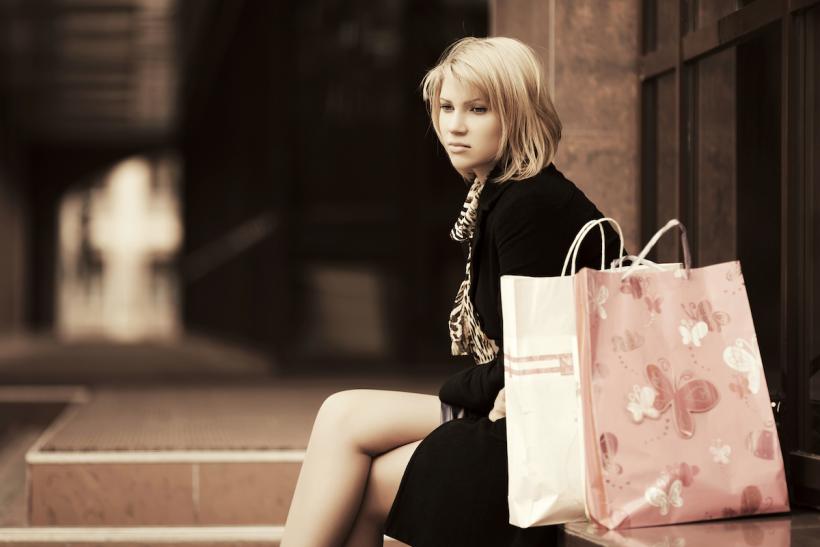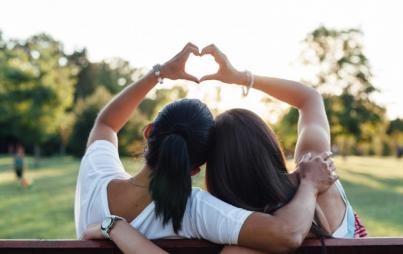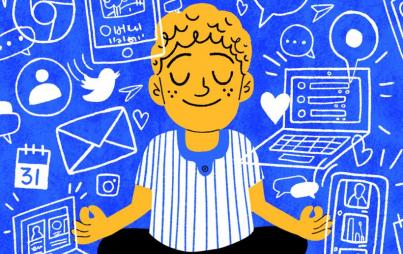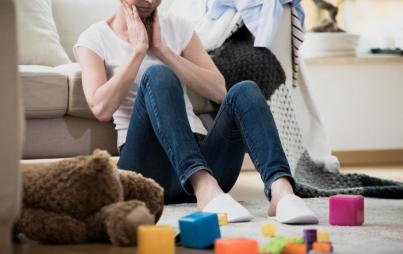
There was a ghost-limb kind of remembrance of scratching an itch that I no longer had, but did once. (Image:Thinkstock)
As a forty-something mom, I rarely shop at Urban Outfitters anymore; I suppose I’ve graduated up to their sister brand, Anthropologie, with its higher quality and higher prices. But recently, while strolling in Seattle’s young, hipster Capitol Hill neighborhood, I decided to take a peek inside. I left with a cream tank top sweater that dipped bracingly low in the back, matched it with a pretty cream-colored lacy bra with silky, artful back straps to wear under it. It felt like something I’d have worn in my 20s or early 30s.
I also left with an arresting memory from my younger adult life.
When I was 34, before I had my daughter at 35, I went through a year of horrific anxiety brought on by a bout of insomnia that spiraled out of control. As doctors tried unsuccessfully to treat the insomnia with anti-depressants, anxiety slid dangerously into full-on depression. My medicine counter was as messy and nonsensical as my brain—as drug after drug was tested, failed, and, at its worst, turned me into the walking dead, hollowed out emotionally yet quietly engaged in a dark internal struggle that I found nearly impossible to put words to…
It was nightmarish, a feeling of imminent doom, of a dread so profoundly palpable as to feel life-choking.
I was working from home at the time, so I had the fortunate (or unfortunate depending on your outlook) unlimited access to our couch. From there, I spent hours supine, curled in a ball, unfurling only to get something to eat or call a friend for support. When you go through that level of depression—the kind that leaves you feeling akin to a dank, wet leaf clinging desperately to a rain-soaked street—you quickly learn who your friends are.
It’s not that all of your friends are bad people; depression—particularly if you haven’t experienced it—isn’t something that everyone is equipped to deal with when it strikes those to whom they’re close. Even the ones who have the stomach and grit for it are often unable to console, though they can always be counted on to take your pitiful call.
Someone who was always there for my call—or calls I should say—was my mom. Afternoon, midnight, it didn’t matter what time, she’d pick up that phone in the deepest of sleeps and talk me through Hell. She also flew to New York from her home in Florida, multiple times, to stay with me while my husband worked during the day—and I didn’t trust being alone.
But without my mom there egging me on, telling me how beautiful I looked in it, how flattering it was to my figure, I’d have never acquiesced to actually bringing it home.
On one of those trips, when it felt like there was absolutely nothing worth leaving the couch or bed for, my mother rallied me on a shopping trip. We had a long history of shopping together, as many mothers and daughters do—and given that my mom had a propensity for insisting to pay for whatever outfits I chose, long after I’d “grown up,” it was a testament to my despair that I had not a frisson of excitement at the prospect of new, free clothing.
Yet, somehow, she managed to get me out and, as if I’d just awoken from a dream to find myself in a magical world outside the dark specter of my apartment, I was suddenly, inexplicably standing in the middle of a huge Urban Outfitters on West Broadway.
It was overwhelming to say the least, and the zeal with which I’d typically tackle a rack of clothes felt like a Herculean task in my anemic state. I remember looking at the items surrounding me on a macro level. There was a ghost-limb kind of remembrance of scratching an itch that I no longer had, but did once. I saw the articles of clothing in the way a baby learns new words: Pants. Shirts. Dress. I understood what they were, but they were devoid of any authentic context.
Their superpower surge of joy was lost.
And then my eyes fixated on a mannequin in the middle of the store. It was engulfed in wintry Bohemian layers; a Victorian-esque ensemble that started with a deep scarlet underskirt made of alternating bands of velvet and lacy cotton. Draped over that was a lilac-colored crocheted dress, soft and delicate like a spider’s web with slightly puffed, cap sleeves and a wisp of a cinch at the waist accented by a darker purple ribbon. The dress was almost floor-length, but not as long as the underskirt, which peeked its contrasting crushed-velvet wine hue beneath it, creating a double layer of skirts below the ankle. To that dreamy effect was added a rather militant jacket; rust-red with dusky purple stripes, high-collared and affixed with metal buttons along the front and at the wrists.
It was something I’d never have put together on my own, though I also never in my life had bought an outfit entirely curated by a salesperson. Yet given my lackluster spirit, it was suddenly perfectly justifiable. My mom noticed me eyeing it and encouraged me to try all the pieces on. I don’t think I had the heart to feel ridiculous, or to say no. I just let her usher me to the dressing room and help me step into the skirt and dress, to slide the coat over my limp shoulders. I was practically a mannequin myself, so why not dress as one?
The thing is though, I liked it. I liked the unexpected symmetry of seemingly disparate textures and colors. I liked that its Victorian sensibility was completely removed from my own normally more classic, mod-ish style. And most importantly, I liked that it was the antithesis of me: the me that I currently wanted so badly to escape. I can’t say it gave me the jolt I typically felt when finding an outfit I loved, but it made my blood, perhaps, pump a little stronger. It made me want it, and wanting anything besides reclusion was, at this juncture, nothing short of miraculous.
But without my mom there egging me on, telling me how beautiful I looked in it, how flattering it was to my figure, I’d have never acquiesced to actually bringing it home. But she did, as she had always done, and continues to do. I can’t remember how the rest of the day went, but I do know that long after my depression had lifted, years and years later even, I still wore that outfit happily, never tiring of that gauzy dress and always marveling that despite its fragility, I never snagged or ripped it.
I loved the ritual of putting on all the parts of it, starting with cranberry-colored tights and ending with dark brown, bordering-on-eggplant Ralph Lauren boots—my personal contributions to the mostly store-ready outfit. The jacket brought a fierceness to the otherwise ethereal visage. It was the piece of me that was salvaged from the wreckage of depression, and it could co-exist beautifully with the softer elements.
To call the experience retail therapy would be a mockery and a diminishment, of both the experience of my depression and my eventual healing. Yet I can’t completely dismiss the magnitude of how the seemingly simple act of dressing—and dressing with the guidance of my mom—lifted me, if only for a few moments, out of a previously impenetrable shell. It was perhaps, then, a special kind of alchemy; one of fabric and color, of the swing of a skirt and the certainty of a shape—and of the unconditional love of a mother who somehow knows what her “child” looks best in, even when she’s at her absolute worst.








